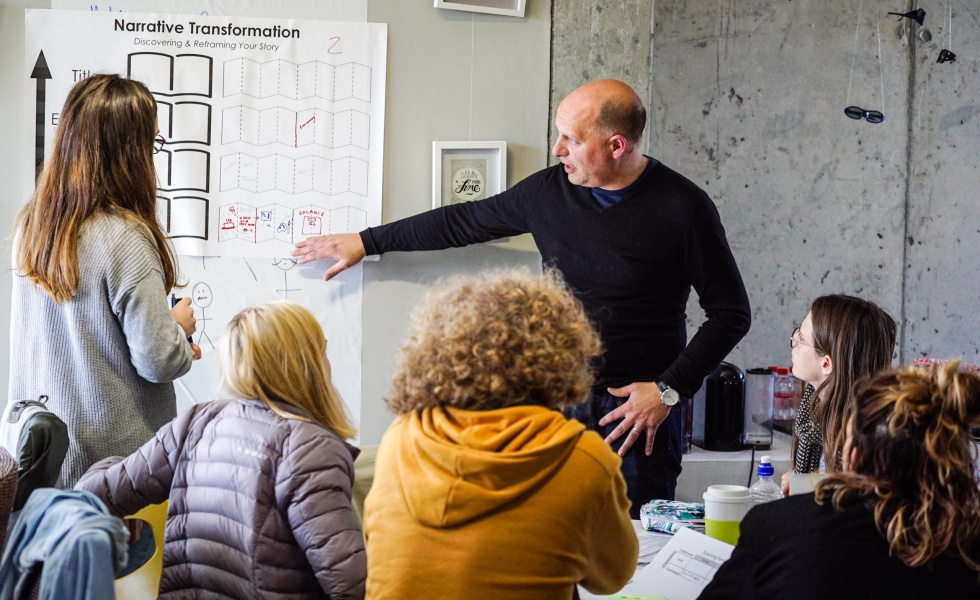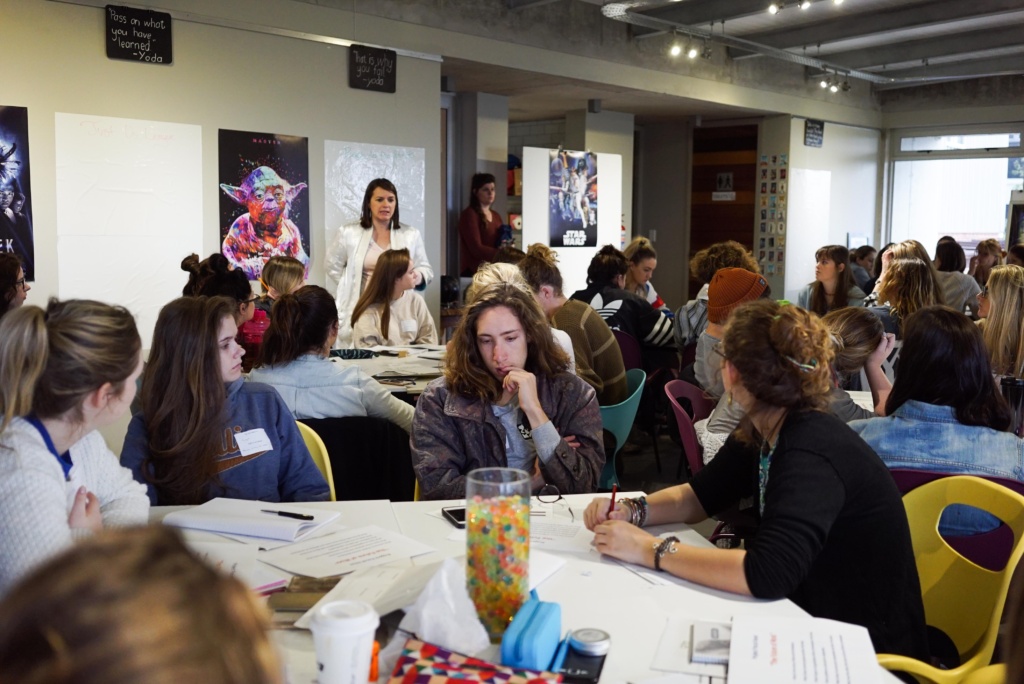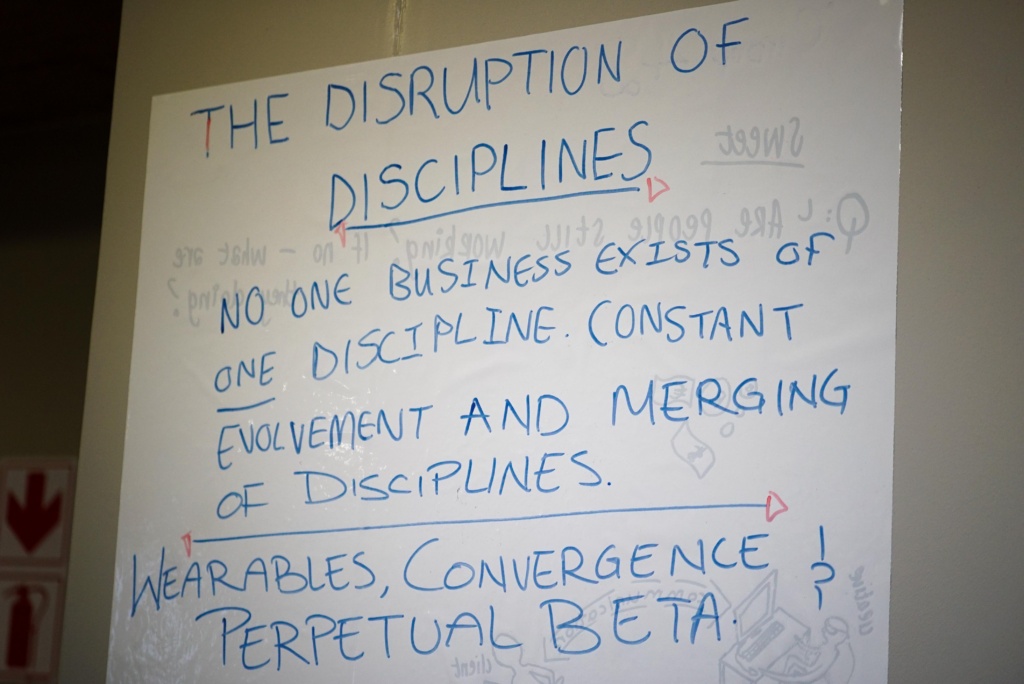The Future of Work in South Africa

We are entering an economy where jobs as we know them are rapidly changing and in many cases disappearing: where technology and humans are changing how and where we work. So, what will the world of work look like in 2030? We often hear buzzwords like ‘collaboration’, the ‘gig economy’, and ‘artificial intelligence’, and see companies forming around these ideas (like Rainfin, TaskRabbit, and the Bebot AI in Japan, respectively), but what are the implications of these trends and how might they contribute to the future of work?
As futurists and Strategic Foresight practitioners, we look at not only at the trends but at what patterns these trends create – and even patterns created by other patterns. Understanding values shifts in society and the ripple implications of patterns are part of a futurist’s day-to-day work. As a result, we constantly think, ‘So what now? What opportunities lie within these areas for innovation and strategy and even my own future?’.
The Movement Comes to Africa
We recently ventured deep into these sorts of questions while working with 74 young futurist design students at the Stellenbosch Academy of Design and Photography in South Africa.

The programme was the result of The Futures School movement, which has now established roots on the African continent. Specially designed for the Stellenbosch Academy of Design and Photography, the programme included a focal issue: The Future of Work.
Over two weeks, these students – second-years studying a variety of design functions such as graphic design, art direction, animation, and photography – were challenged to look beyond today and co-create futures scenarios in order to think about their futures as designers in visual communication fields. These futurists will soon be entering and reshaping the workplace, the economy, and the world.
The Programme
In interactive sessions, the facilitators introduced the field of Strategic Foresight and transferred practical know-how and tools in futures thinking – such as building your own system to scan the environment for trends and weak signals, and taking that information to identify and make sense of larger patterns.
One major component of the programme is learning about and practicing scenario planning tools. These tools helped the students unlock their futurist mindsets, and equipped them to work within our unpredictable world and VUCA environment – volatile, uncertain, complex, and ambiguous.
During the scenario planning section, the students collaborated in small groups to complete narrative transformation exercises. The exercises enabled them to create narratives and scenarios of possible future. Brainstorming and building future scenarios seemed to come naturally to this creative millennial group, and the quality of ideas conceived was out of this world.

A key concept of Strategic Foresight, developed by Yvette Montero Salvatico and Frank Spencer, the founders of Kedge and The Futures School in the US, is the ‘Push and Pull’ of the future. The ‘Pull’ of the future is the idea that the future is not something that happens to us, but rather something that we co-create. When the students presented their scenarios on day four, it was clear that these students grasped the ‘Pull’ of the future in a second.
A strong thread throughout the scenarios developed was how economic and business structures are being remodeled. We are consistently moving away from hierarchal structures to a more organic, collaborative, and networked model where people are engaged for the talent or skills that they have for the project at hand. There were a few major implications and innovation opportunities identified from this thread: the need to become more resilient, agile, and adaptable; the importance of thinking broadly, and diversifying your skillset offering; and the potential to create hybrid workers and online environments that embrace the ‘whole person’ with multiple career paths and interests running parallel. All of these ideas also fit neatly into the prerequisites for a futurist mindset, and point to a futurist approach to living and growing.
In the second week of the programme, the students were introduced to an array of speakers from various industries and paths within the South African and international environments, including some South African alumni from the broader The Futures School programme. These speakers all use design thinking and Strategic Foresight in their projects and companies, but most importantly in their everyday lives. These talented social entrepreneurs, designers, and innovators – including Andi Norton (Imagine Inc.), Greg Beadle (Photographer, Entrepreneur and Start-Up Investor at The Bureaux Cape Town), Alessandro Tasso (Photographer and Photographic Artist), Francois Malherbe (Unravelling Adventurer and Purpose Seeker), Charlotte Kemp (Author and Speaker), Buntu Sithole (Graphene and Tech Engineer, Innovator, and Entrepreneur), and Jennifer Middleton (Prima Ballerina, Fashion Designer, and Entrepreneur) – shared inspirations and stories around entrepreneurship, futures, failure, opportunities, values, and a fearless futurist approach for the ideas and communication creatives at the Academy.

After the initial scenario building process, and with the ideas from the speakers fresh in their minds, students were tasked to build even larger scenario products around a different focal issue. For over a week, the groups went into environmental scanning mode to find trends and create patterns around a central mission: as designers and creatives, build scenarios around grand solutions for grand challenges in the world. Becoming a sensemaker was key in this assignment – learning how to look beyond obvious trends and issues so that you can make sense of what is emerging in the landscape as a result of converging and colliding ideas, values, signals, and technologies. Moving from isolated trends to larger patterns of impact, themes of focus, and narratives of change all served as fodder for the students’ scenario building work in this assignment.
To conclude the programme and present their final project, students took part in a ‘Futures Faire’, where they were travelled back from either the year 2030, 2050, or 2100 and presented their views on their mission brief. Thought-provoking artefacts, experiences, services, prototypes, and sketches of what a grand solution in the future will look like were presented to a panel of entrepreneurs, futurists, creatives, and foresight practitioners in the South African economy – Jackie Burger, Frans Stroebel, Howie Viljoen, and Dr Marié-Luce Kuhn. New professions were imagined or a new industry in the futures of creative work.
Reflections
Strategic Foresight is a group sport, and the students accepted this readily. Collaboration between students and groups were solidified, and the students were given various opportunities for collaboration on various projects with the entrepreneurs and futurist panel members that were part of the programme. In the end, the students proved that not only would they creatively rule the world steered by important values and passion, but they would also use participatory and collaborative strategy development to do so. They showed us all that unlocking the futurist mindset gives us a way to create truly transformational futures for the African continent.

